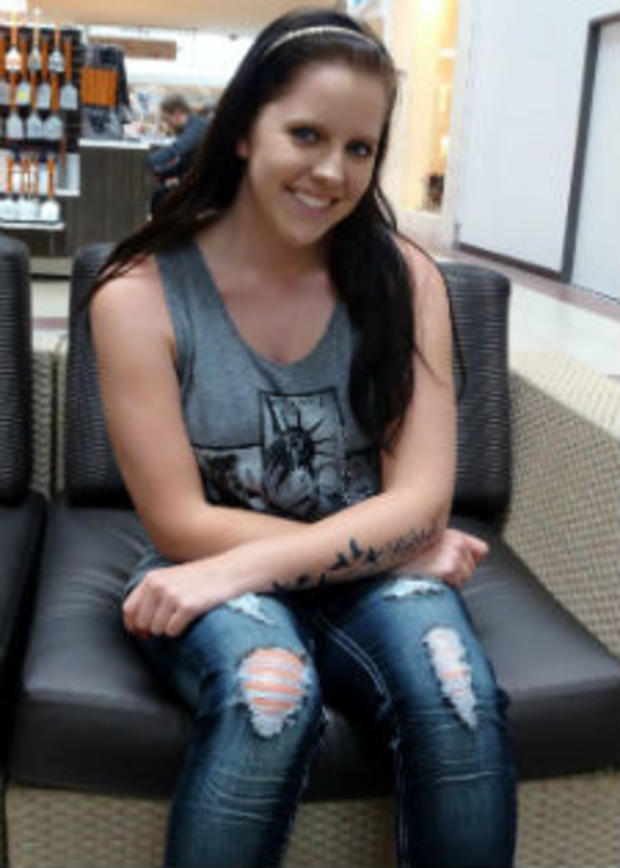Ask A Sacramento Expert: How To Distress Your Jeans
Guen Kelly
Couture Canine Creations
Sacramento, CA
www.etsy.com/shop/couturecaninecreates
Guen Kelly designs accessories and clothing for both people and pets, and is an all-around crafter extraordinaire. In addition to sewing and tailoring, her personal repertoire of talents includes embroidery, painting, knitting, crocheting, alterations and leatherwork. The Sacramentan sells a wide range of hand-created products on Etsy and at numerous events around the area, and takes custom orders from customers worldwide. The creative and enthusiastic artist also donates much of her work and time to charities in Sacramento and across the country.
Kelly describes distressed clothing as being "deliberately destroyed," which creates a worn, torn and relaxed look and feel. While distressed jeans, shorts and jackets are available for sale from major fashion retailers and boutiques, the price tags attached can be rather hefty. Instead, Kelly offers advice on how to create your own one-of-a-kind distressed clothing at a fraction of the cost. So instead of getting stressed about distressing, just follow Guen Kelly's helpful hints.
Find the right fabric and tools
Denim is the fabric that is commonly associated with distressing, and Kelly agrees that it is the best to work with. "Denim is one of those magical fabrics that you can abuse and abuse and it holds up just fine," she says, laughing. But khaki and other twill fabrics have the same kind of weave as denim, just with slightly thinner thread, so the distressing process can work just as well.
Kelly says that thrift stores and consignment boutiques are a good source for distressible clothing, but new items can work well too. Using stiffer denim or twill often results in an edgier look, while less stiff material looks softer and fuzzier when distressed. According to Kelly, the process also works well on stretch denim.
To get started, Kelly says, "Tweezers are a must, along with a reasonably sharp pair of scissors."
Many of the ways fabric can be distressed involve handling sharp objects or chemical solutions like bleach. Be careful when using these tools in order to avoid nicking your skin or cutting and damaging other items in the work area. Kelly stresses that this is generally not an activity for children, although closely supervised older kids may enjoy taking part.Related: Best Personal Stylists And Shoppers In Sacramento
Location, location, location
Choosing where to alter the fabric is important to the appearance and durability of the item. Kelly says the best areas are typically the thighs, on or below the knees and on the top of the front or back pockets. To avoid wardrobe malfunctions, avoid doing the process on the parts that receive the most stress while being worn. On jeans, this includes the crotch area, under the rear pockets and near any seams.
Get the hole story
To create a large hole with horizontal white threads, Kelly suggests choosing a spot mid-thigh or below. Cut two parallel, horizontal lines, about one to two inches long. Start small, Kelly suggests, because "you can always make it larger if you want, but you can't make it any smaller." In the middle section of a cut, use tweezers to pull out the vertical blue threads, but avoid tugging on any of the white threads. At both ends of the cut, just loosen the blue threads without removing them, or the cuts may tear when you put the pants on. Fray the ends with your fingernails to make the distressing look more natural.
It is easy to create small, lacy or vertical holes, or add distressing to front or back pockets. Rest the fabric on a surface like a firm pillow or arm of a couch, then rub the tip of one scissor blade on the desired area to fray it. Once white threads start to show, you can either stop there or soften the look by picking at the edges with tweezers. For vertical holes, pinch a small section of fabric horizontally and make a short, one-inch cut, then follow the same steps with the other holes. On front or back pockets, be very careful to avoid hitting any seams. At the top of the pocket, use tweezers to pull at very thin slivers of thread, or fray with the scissor point, sandpaper, a disposable razor or even a butter knife from the kitchen.
Common household bleach can also be used on the fabric to add a softer, more worn and relaxed look. Kelly suggests that it is best to do this outside on concrete or at least on a tarp. Carefully drip or splash bleach on chosen areas of the fabric, leave it on for a short period and then rinse thoroughly. Leaving the bleach on for more than five minutes, Kelly warns, can literally destroy the fabric.Normal laundry steps can be followed to care for the distressed clothing you have created. Most denims and twills get softer and look more worn after multiple times in the washer and drier, especially with agitator washing machines.Related: Best Jewelry Stores In Sacramento
Her work can be found at Examiner.com.





